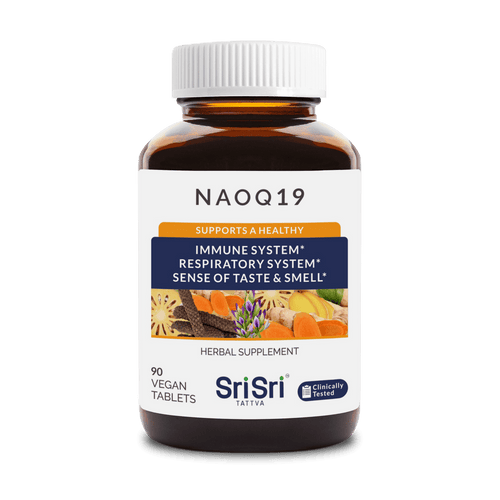The Sanskrit word “dosha” basically means defect or fault, and Ayurveda defines it by referring to three substances i..e Vata, Pitta, and Kapha. These three ayurveda doshas are influenced by five elements:-
- Air
- Ether
- Earth
- Water
- Fire
Ayurveda considers them “5 elements of the universe” that must be balanced. When anything from vāta, pitta, and kapha fluctuates, the consequences can be experienced from the aspects of aging, growth, and diseases. We will elaborate on Ayurveda doshas individually below for better clarity.
Deep Understanding of Three Doshas
The three doshas in Ayurveda, Vata Pitta Kapha, are three primary types of fuel that power your body. Every person has a unique mix of these fuels. Collectively known as “tridosha,” they symbolize a psycho-biological model of Ayurveda. Originating from ancient Indian medicine, the tridoshas play a pivotal role in defining one's physical, mental, and emotional health. Our modern lifestyle is heavily influenced by the factors causing a substantial imbalance in them. You must know that irregular sleep cycles, unhealthy eating habits, and mental stress are directly associated with severe dosha impacts. Have a clearer insight into dosha types covering the body’s characteristics below:-
Vata dosha and Vata Body Type
Vata represents wind and ether energy flowing throughout our body. This element swiftly controls movements occurring inside our body from the blink of an eye to full blood circulation. Vata dosha, one of Ayurveda's foundational concepts, epitomizes the elemental qualities of air and space. It's the driving force behind movement, circulation, and nerve impulses in the body. When balanced, Vata promotes creativity and vitality. But, disturbances can lead to physical and mental challenges.
Characteristics of Vata Body Type
Physical Traits
- Slim physique and prominent joints.
- Dry skin and brittle nails.
- Quick movements, accompanied by fast speech.
Mental and Emotional Attributes
- Agile mind, quick to think and grasp new concepts.
- A tendency towards anxiety and restlessness when stressed.
- Naturally creative and enthusiastic.
Pitta dosha and Pitta Body Type
Pitta dosha embodies the fiery essence of water and fire elements. It is central to digestion, metabolism, and temperature regulation in the body. When in equilibrium, Pitta dosha body type imparts intelligence, understanding, and leadership skills. However, when aggravated, it can induce inflammation and intense emotions.
Characteristics of Pitta Body Type:
Physical Traits
- Medium build with a muscular physique.
- Warm skin, often with a reddish undertone, prone to sunburn and acne.
- Sharp facial features and penetrating eyes.
Mental and Emotional Attributes
- Sharp intellect with a knack for organization and leadership.
- Competitive nature, with a tendency towards perfectionism.
- When out of balance, they may display irritability or anger.
Understanding the intricacies of the Pitta constitution is pivotal for harnessing its strengths. Individuals can channel their fiery energy productively while maintaining optimal well-being by making informed choices.
Kapha dosha and Kapha Body Type
Kapha dosha body type is the embodiment of the earth and water elements. According to the Ayurveda doshas study, it lends structure, stability, and lubrication to the body. In a well-channelized form, Kapha brings strength, endurance, and calmness. But an excess can result in sluggishness, excess weight, and congestion.
Characteristics of Kapha Body Type:
Physical Traits
- Sturdy, rounded build with a tendency towards weight gain.
- Smooth, oily skin and thick, wavy hair.
- Large, attractive eyes with a serene gaze.
Mental and Emotional Attributes:
- Calm, patient, and loyal by nature.
- Strong memory and methodical approach.
- Susceptible to feelings of attachment and resistance to change.
Harnessing Kapha is the way to a balanced, grounded life. Adopting invigorating habits, Kapha individuals can stay active and harness their innate strength and serenity. Now that you are aware of all three dosha types, let’s enhance your awareness regarding how to deal with imbalances.
How to balance vata pitta kapha
Balancing Vata in Daily Life
Among the ayurveda doshas Vata Pitta Kapha trilogy, the Vata constitution, characterized by its ethereal blend of air and space elements, brings movement and vitality. However, with its ever-moving nature, it can be prone to disruptions and imbalances.
Dietary Insights for Vata Balance:
Warmth and Nourishment: Due to Vata's cool and dry attributes, it's essential to prioritize foods that are warm, moist, and nourishing.
Dairy Products: Warm milk, especially when spiced with a touch of turmeric or cardamom, can be soothing.
Nuts: Almonds and walnuts, which are high in oils and nutrients, offer great balance.
Establishing a Steady Routine
Sleep Schedule: Aim for a regular sleep pattern, retiring early and rising with the sun.
Meal Timing: Try to consume meals around the same time daily, allowing proper digestion.
Daily Practices: Abhyanga, a self-massage using warm sesame oil, can be calming and grounding for Vata individuals.
Relaxation Techniques
Grounding Meditation: Visualizing roots extending from the body deep into the earth.
Deep Belly Breathing: Long, deep breaths to calm the quick-moving Vata energy.
Guided Visualization: Gentle journeys that are grounding, such as imagining a serene forest or calm beach.
Yoga Nidra: Deep relaxation technique to provide restfulness without sleep.
Mantra Meditation: Using calming mantras like "LAM" to promote stability and grounding.
Balancing Pitta in Daily Life
Pitta's fiery and intense nature, representing the fire and water elements, needs careful nurturing to prevent it from flaring out of control.
Dietary Insights for Pitta Balance
Cooling Foods: Due to Pitta's hot nature, focus on foods that cool and soothe.
Dairy: Fresh milk, butter, and ghee can counteract excess heat.
Sweet Fruits: Pears, melons, and grapes are refreshing choices.
Grains: Barley, rice, and oats can be grounding.
Routine to Calm Pitta
Avoid Overexertion: Ensure you don't burn out by pushing too hard, especially during the hotter parts of the day.
Nature's Bliss: Spending time near water, like lakes or rivers, can be pacifying.
Stimulation Techniques
Cooling Breath (Sheetali Pranayama): Breathing through a curled tongue to cool the body and mind.
Moon Meditation: Meditating under the moonlight or visualizing the cooling moon.
Loving-kindness (Metta) Meditation: To channel and balance the fiery nature of Pitta towards compassion.
Visualization of Cool Landscapes: Imagining snow-capped mountains, moonlit lakes, or starry skies.
Mantra Meditation: Using cooling mantras like "YAM" to calm the fiery Pitta energy.
Balancing Kapha in Daily Life
Grounded in the earth and water elements, Kapha's attributes of stability and groundedness need the right stimuli to prevent stagnation.
Dietary Insights for Kapha Balance
Stimulating Foods: Invigorate the sluggish Kapha system with spices and flavors.
Spices: Turmeric, ginger, and cayenne pepper can stoke the digestive fire.
Honey: A natural Kapha pacifier when used in moderation.
Astringent Vegetables: Broccoli, asparagus, and brussels sprouts.
Active Routine for Kapha
Physical Activity: Kapha types benefit significantly from consistent movement.
Cardio: Activities like running, cycling, or aerobics can be energizing.
Sun Salutations: A series of yoga postures performed in quick succession can kickstart a Kapha's day.
Stimulation Techniques
Breath of Fire (Kapalbhati): Rapid inhalation and exhalation to stimulate and energize.
Walking Meditation: Meditate while walking briskly to maintain a sense of movement and stimulation.
Mantra Meditation: Use invigorating mantras like "RAM" to ignite the inner fire.
Visualizing Light and Warmth: Imagining the warmth of the sun to counteract the coolness of Kapha.
The Bottom Line
Mind, body, and spirit are seamlessly interconnected with the natural rhythms of the universe. With each ayurveda doshas offering distinct qualities and energies, understanding their balance is the key to optimal health, vitality, and serenity. Recognition of Ayurveda body type on a dosha basis and aligning your lifestyle, diet, and habits accordingly is the key to a balanced life. Adopt this age-old wisdom for a balanced and fulfilling life journey.





